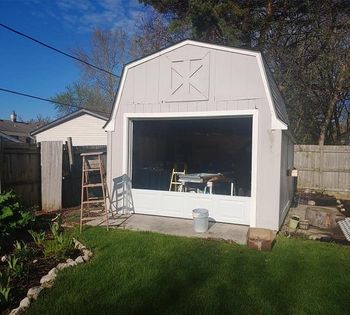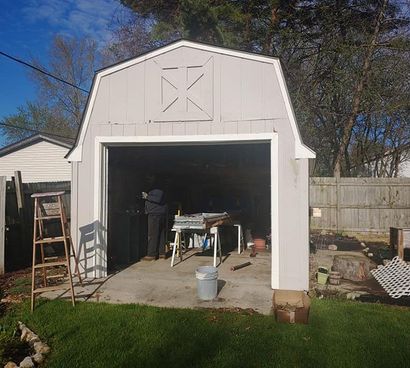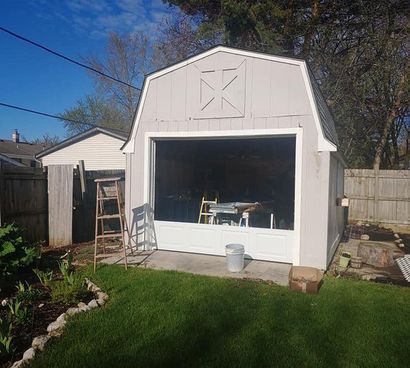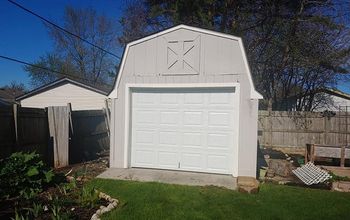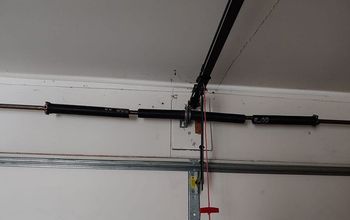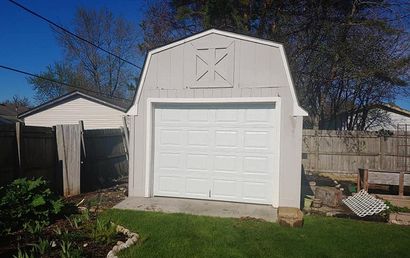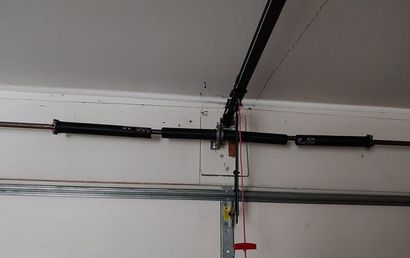What are the parts of a Garage Door?
Torsion Springs
The lifting muscle of your overhead door. This tightly-wound spring is twisted to load up force. When the overhead door goes up, the spring unwinds, which helps lift the door's weight. Overhead doors are very heavy, and without torsion springs, neither you nor the garage door opener could lift the door. Torsion springs are crucial to your hanging door system working correctly. Some more massive overhead doors need more than one torsion spring. Because of the force these springs are under, extreme caution needs to be taken when working on loaded torsion springs.
Door Tracks
These are the tracks that guide your door from the closed to open position, and back to closed again. The door rollers are attached to the door and move freely and smoothly through these tracks. If one of your door tracks becomes damaged in any way, your overhead door will lose its smooth operating process if it even opens at all. When you make your garage door opener work harder, you drastically shorten its life. In extreme cases of door track damage, the entire overhead door can dislodge itself from the tracks and fall onto whatever is unfortunate enough to be under it (hopefully, NOT YOU!).
Horizontal Struts
These rigid struts act as braces to help support your door panels when your door is in the open position. Sometimes you can get by with not installing these on smaller doors, but they are necessary (sometimes required by local building codes) on larger doors. When your overhead door is in the opened position, it is only supported on the ends by the rollers in the tracks. These struts help support the weight of the panels in the middle where there otherwise would be no support. If your overhead door is jerky when it is opening or closing, this could be a result of improperly installed (or MISSING!) struts.
Automatic Door Opener
One of the greatest inventions of all time! Okay, maybe not the greatest, but they sure are nice to have, though a significant pain if they are not working correctly. When all the other components of a door are working correctly, the opener smoothly and effortlessly opens and closes your overhead door by the simple push of a button. The most popular designs of door openers are chain drives and screw drives. Each has its advantages and disadvantages.
Door Panel Hinges
Almost all modern overhead doors are built using multiple horizontal panels. These panels need to be connected somehow, and because the door needs to follow the tracks when opening and closing, it needs to hinge where the panels meet. That is what the hinges take care of. It may sound simple, but just like any other moving part, hinges can wear out too.
Weatherstripping
Your overhead door should have a weatherstrip installed on the bottom of it to help seal what is outside from what is inside the door. These are especially important if you have attached garages or heated garages. Don't let a faulty or missing weatherstrip cause your utility bills to be higher than they should.
Safety Clearance Eyes
These safety devices are an essential component of your overhead door system. What they do is prevent or stop the door from closing if they detect that any form of obstruction exists. Obstructions can be anything, from vehicles and children's toys to pets and young children. These devices function by projecting an invisible beam across the base of your door. When each eye can "see" each other, it allows your door opener to work normally. If they are unable to "see" each other, it means that something is in the way.


